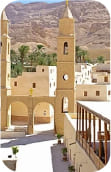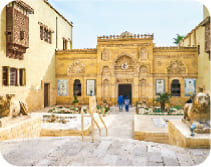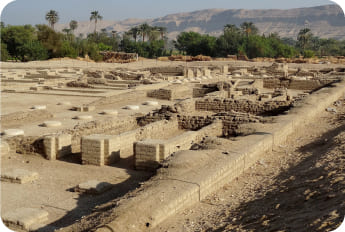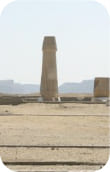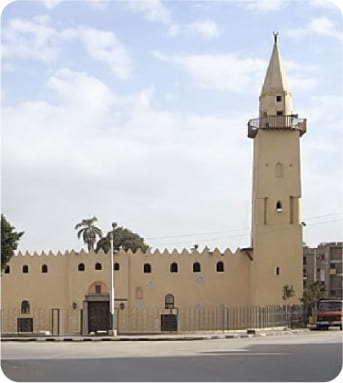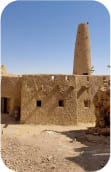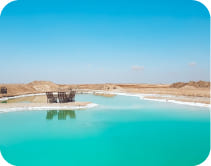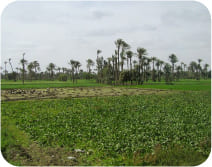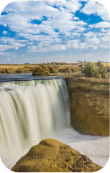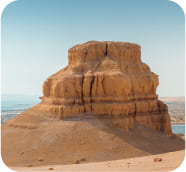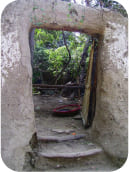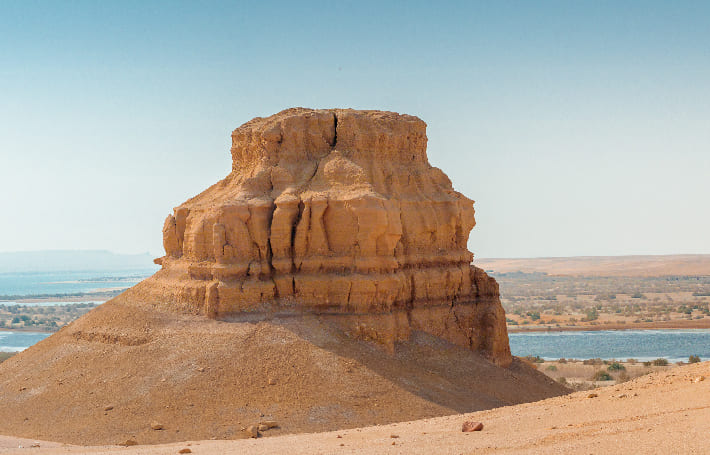





Minimum group size: 4 people

Tour prices*:
3* – from $855 per person
4* – from $915 per person
5* – from $950 per person
*with accommodation in a Double Room
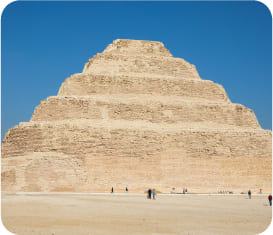
The Step Pyramid of Djoser
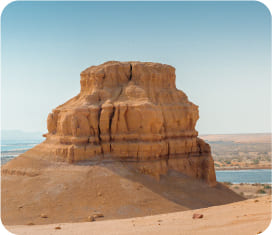
Jabal al Mudarra
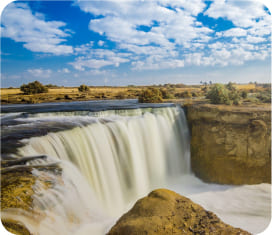
The Wadi El Rayan Nature Reserve
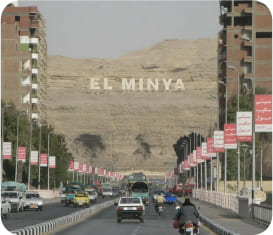
El Minya
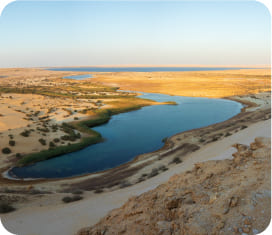
Fayoum Oasis
Arrival in Cairo (preferably in the first half of the day).
Airport meeting and transfer to the hotel. Check-in at the chosen hotel.
A Nile cruise with dinner and an entertainment program is the perfect start to a journey through Egypt. Immerse yourself in the atmosphere of the country, enjoy the sunset over Cairo, and experience a colorful show featuring breathtaking performances, including the male Sufi dance "tanoura" and the traditional female belly dance.
Return to the hotel.
Breakfast at the hotel and departure for an excursion to the world-famous pyramids and the Sphinx in the Giza Plateau, as well as the Step Pyramid in Saqqara, which is a place that is equally fascinating for enthusiasts of mysterious Egyptology.
Participants of the tour will see the monumental Great Pyramids, including the Pyramid of Khufu, rightly named one of the "Seven Wonders of the World". The Great Sphinx will also draw attention; it’s a legendary guardian of Ancient Egyptian secrets, which was carved from a single limestone rock in the shape of a colossal lion with a human face lying on the sand. This is the oldest sculpture in human history, with an estimated construction date of 2559 BCE.
Then the excursion participants will head to Saqqara to see another famous landmark, the Step Pyramid of Djoser, the oldest of all pyramids, built around 2650 BCE.
The next point in the tour itinerary is a sightseeing tour of Cairo, and after lunch, which is an optional service and extra charged, we will take a stroll through the halls of the world-famous repository of antiquities, the Egyptian Museum.
Dinner is also offered optionally and is paid for separately.
Overnight stay at the hotel in Cairo.
Breakfast at the hotel. Then, we will visit the old Coptic part of Cairo. We will see the Babylon Fortress and the famous Hanging Church. The program also includes a visit to the Ben Ezra Synagogue, which is located within walking distance of the Christian religious sites and dates back to the 4th century AD.
Participants of the tour will explore the famous Citadel, a powerful fortress that served as a stronghold for the Egyptians during the Crusades in the Middle Ages. The main attraction of the Citadel is the luxurious Alabaster Mosque, which can be admired from all over Cairo. The city itself is also visible from the Citadel's viewpoint.
Lunch is offered to the excursion participants optionally and paid extra.
After the meal, we will embark on a hunt for the most interesting souvenirs at the Khan El Khalili market, where goods made by the hands of hereditary craftsmen, who have been honing their skills for centuries, are sold. By the way, the market itself, the oldest in Cairo, is an incredibly colorful attraction.
Dinner at an Egyptian cuisine restaurant and overnight stay at the hotel in Cairo.
Breakfast at the hotel, followed by departure to El Minya, the administrative center of Minya Governorate, located 400 km from Cairo.
About 20 km from El Minya, on the east bank of the Nile, there’s a monastery built in honor of the Holy Virgin. The monastery’s main shrine is a church constructed in 328 AD within a cave that served as a refuge for the Holy Family during their flight into Egypt. In El Minya, the Coptic text of the Gospel of Judas was found within the Codex Tchacos.
This city is laid out with most of its streets intersecting at right angles. It boasts an intriguing historical architecture that includes many colonial mansions built by Italian architects for local cotton magnates. El Minya is often referred to as the true "Pearl of Upper Egypt".
The program of the day also includes a visit to the village of Ashmunein and the famous necropolis of Tuna El Gebel, where most tombs and other structures date back to the Ptolemaic and Roman periods, although there is at least one temple from the reign of Pharaoh Amenhotep III.
Dinner and overnight stay will be arranged at Omar El Khayam Al Minya Hotel in El Minya.
Breakfast at the hotel, followed by departure for a tour of the tombs at Beni Hassan and Tell El Amarna.
The first stop on the itinerary is Beni Hassan, a cliffside necropolis from the Old and Middle Kingdoms of Egypt. This cultural and historical site is located on the eastern bank of the Nile. Around 40 tombs are found here, featuring well-preserved reliefs depicting scenes from ancient daily life, including sports, hunting, fieldwork, boat journeys, and offerings to the gods.
Next, we will visit Tell El Amarna, a complex of monuments from the legendary ancient Egyptian city of Akhetaten, built by the heretic pharaoh and husband of Nefertiti, Akhenaten (Amenhotep IV).
Afterward, we will return to Cairo.
Dinner is available upon request for an additional fee, and the night will be spent at a hotel in Cairo.
Breakfast at the hotel, followed by departure to Fayoum Oasis, located 99 km away from Cairo. This is Egypt’s largest oasis which is the closest to Cairo. The depression where it lies in, separated from the Nile Valley by a low ridge, covers an area of 12,000 km².
In the northern part of Fayoum Oasis there’s a large, slightly saline Lake Qarun, situated 45 meters below sea level. The lake is 40 km long and up to 8 km wide, traditionally providing a resting place for migratory birds.
Egyptians began intensive development of Fayoum during the Middle Kingdom. Under Pharaoh Amenemhat III (1855–1808 BCE), a canal was diverted from the Nile to the oasis, later known as Bahr Youssef (Joseph’s River) in the early Christian period. This canal remains the main water source in Fayoum.
The oasis and province’s administrative center, also named Fayoum, was founded during the Middle Kingdom. The Greeks called it Crocodilopolis due to the worship of Sobek, the crocodile-headed god. In the city center, one can see wooden waterwheels with paddles, known as norias by the ancient Romans. Driven by canal water, they are Egypt’s only monument of their kind.
On Fridays, artisans from around Fayoum gather in the center to sell their goods. The most common craft here is the weaving of reed and straw, with a variety of items at affordable prices.
18 km southeast of Fayoum, in Lahun, there’s the pyramid of Pharaoh Senusret II (1880–1874 BCE). Its base measures 106 meters, and it stands 48.6 meters tall. Made from mudbrick and once finished with stone, its outer casing is no longer preserved. The pyramid is unique for its entrance on the south side instead of the usual north and has a deep shaft leading to an underground corridor. Its granite-lined burial chamber is in the southeast corner rather than the center.
Another pyramid, built for Pharaoh Amenemhat III, is located 12 km northeast of Fayoum, in Hawara. Like other Middle Kingdom pyramids, it is modest in size, standing 58 meters tall. Its stone casing has long since eroded, giving it the appearance of a hill. Inside is a complex arrangement of real and false corridors and small chambers. The burial chamber, uniquely carved from a single 110-ton limestone block, houses a quartzite sarcophagus. The nearby mortuary temple, known in antiquity as the Labyrinth, was described by Herodotus as containing 3,000 rooms connected by corridors. During the Greco-Roman period, the Labyrinth attracted numerous travelers.
Near the pyramid, a Roman necropolis was discovered in the late 19th century, with the famous Fayoum portraits, which are images placed over mummies.
Finally, 45 km southeast of Fayoum lies the Wadi El Rayan Nature Reserve, a natural site with two freshwater lakes connected by a small river. Due to the differing water levels, the river forms a range of picturesque waterfalls. The lakes are rich in fish, and fishing (unlike hunting) is permitted here. The lake shores, fringed with reeds, are home to many birds.
We will embark on a jeep safari, visiting Wadi El Hitan National Park. We’ll also head to the magical springs and Mount Medawara, where we can enjoy sandboarding.
During the tour, travelers will be provided with lunch.
Dinner and an overnight stay will be at the Helnan Auberge Fayoum Hotel.
After breakfast at the hotel, we will depart for Wadi El Natrun, a valley with 10 alkaline lakes located in northern Egypt, between Cairo and Alexandria. In ancient times, the lakes provided a substance used by the Egyptians for mummifying bodies.
In Christian literature, this land is known as the Nitrian Desert. Here, in one of the local monasteries dedicated to Saint Mary, the Nitrian Codex palimpsest was discovered in 1842, containing, among other texts, the Gospel of St. Luke.
This region is considered the "cradle" of monasticism. Out of approximately 50 ancient Coptic Christian monasteries that once were here, only 4 have survived to the present day. We will visit the Monasteries of Anba Bishoy and Paromeos (Baramus).
Afterwards, we will return to Cairo, where dinner is available upon request for an additional fee.
Overnight stay at a hotel in Cairo.
Breakfast at the hotel.
Transfer to the airport.
Flight home.

